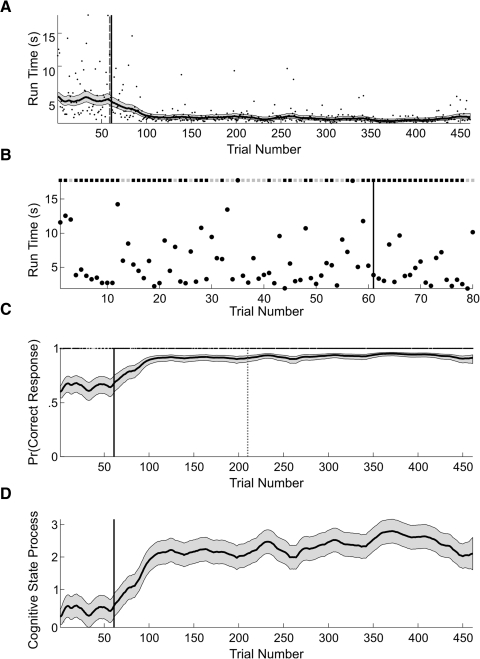Fig. 5.
A: black dots are the run times of the mouse executing the T-maze learning task. EM algorithm estimates of the run time curve (solid black curve) and its 95% confidence intervals (gray area) computed from the combined analysis of the run time and binary data. The solid black (dashed gray) vertical line is the IO(0.975) learning trial of 61 (59) computed using the combined run time and binary data (run time only). B: run time and binary data from trials 1 to 80 and IO(0.975) learning trial (black vertical line) for the combined model. C: the correct (black squares) and incorrect (gray squares) trial responses are shown at the top of this panel. EM algorithm estimate of the learning curve (solid black curve) and its 95% confidence interval (gray area) computed from the combined analysis. The black (gray dotted) vertical line marks the IO(0.975) learning trial of 61 (210) for the combined (binary data only) analysis. D: EM algorithm cognitive state estimate computed from the combined analysis of the run time and binary data. The gray areas are the 95% confidence intervals. The black vertical line marks the IO(0.975) learning trial of 61 for the combined model.

